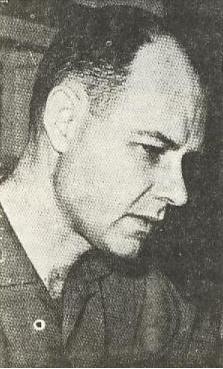Interview with Robert W. Prehoda (1969)

CRYONICS REPORTS: What is your background?
PREHODA: My degrees are in chemistry and my research experience has been focused primarily on propulsion chemistry (rockets, ramjets, etc.), although I have had considerable research experience in the biological sciences. I have participated in investigations of natural hibernation, partially successful attempts to induce hibernation in animals that do not hibernate, and unsuccessful experiments involving whole animal DMSO perfusion and freezing.
CRYONICS REPORTS: When did you first become interested in the possibility of extending the human lifespan?
PREHODA: I have been interested in life span extension since I was in my teens, and have been contacting scientists active in various phases of gerontology and reduced metabolism throughout the world since about 1950. Many of them are now close friends.
CRYONICS REPORTS: How bright do you feel the prospect of immortality is?
PREHODA: Immortality is statistically impossible because accidents would eventually eliminate all individuals in any non-aging population. Extreme examples of unavoidable accidents include meteorite impact or a cosmic ray (heavy element ion) striking a suitable target atom nucleus in a vital portion of the brain. These and other extreme examples would rule out immortality. However, the human life span can be significantly extended via control of the aging process, human hibernation or a synergistic combination of both.
CRYONICS REPORTS: What was your role in the freezing of Dr. Bedford?
PREHODA: I was present at the request of Norman Bedford and served as his representative on that occasion. However, I am still opposed, as I was before Dr. Bedford’s death, to freezing people at the present time because this money should be spent on research. Any human freezing is premature and without scientific basis until a mammal can be revived from the frozen state.
CRYONICS REPORTS: What is the Bedford Foundation?
PREHODA: It is an organization, set up by Prof. James H. Bedford before his death, whose only purpose is to engage in basic cryo-biological research.
CRYONICS REPORTS: What activities is it engaged in? What are its plans?
PREHODA: The Bedford Foundation started to undertake a program of research along the lines fully described in my new book on reduced metabolism, SUSPENDED ANIMATION. Unfortunately, litigation to break Dr. Bedford’s will intervened, and the case has not been settled in the courts.
CRYONICS REPORTS: What are the titles of your books and what are they about?
PREHODA: DESIGNING THE FUTURE, THE ROLE OF TECHNOLOGICAL FORECASTING (Chilton Books, 1967) was the first American publication on technological forecasting and the importance of this new discipline to economic growth, education, military defense and the allocation of funds between contending R & D options. EXTENDED YOUTH, THE PROMISE OF GERONTOLOGY (G. P. Putnam’s Sons, 1968) is the first popular book to be published since 1960 on the research areas that may allow senescence to be overcome. SUSPENDED ANIMATION (Chilton Books, 1968) is the first semi-popular book to deal with the research requirements and options that may allow human hibernation and cryogenic suspended animation to be achieved.
CRYONICS REPORTS: What area of scientific research do you believe should receive first priority?
PREHODA: Dr. John Bjorksten’s molecular cross-linking aging research, which I believe will be recognized in the 1970’s, as the most important and momentous scientific discovery of the 20th century.
CRYONICS REPORTS: What are your immediate plans?
PREHODA: My immediate plans include the continued refinement of technological forecasting methodology and the writing of a series of future-oriented books on emerging branches of applied biology and the physical sciences. I will continue to do everything I can to promote responsible research in gerontology and reduced metabolism, with particular attention to my original conceptual research contributions to both of these vitally important branches of applied biomedicine.
First published in Cryonics Reports, Vol. 4, No. 1, January, 1969